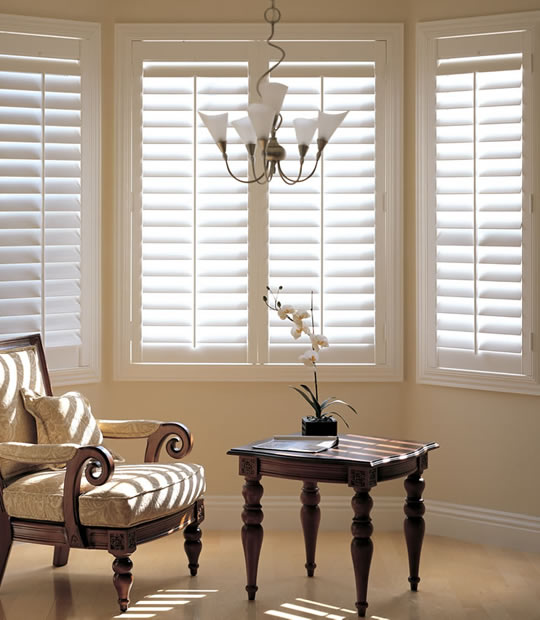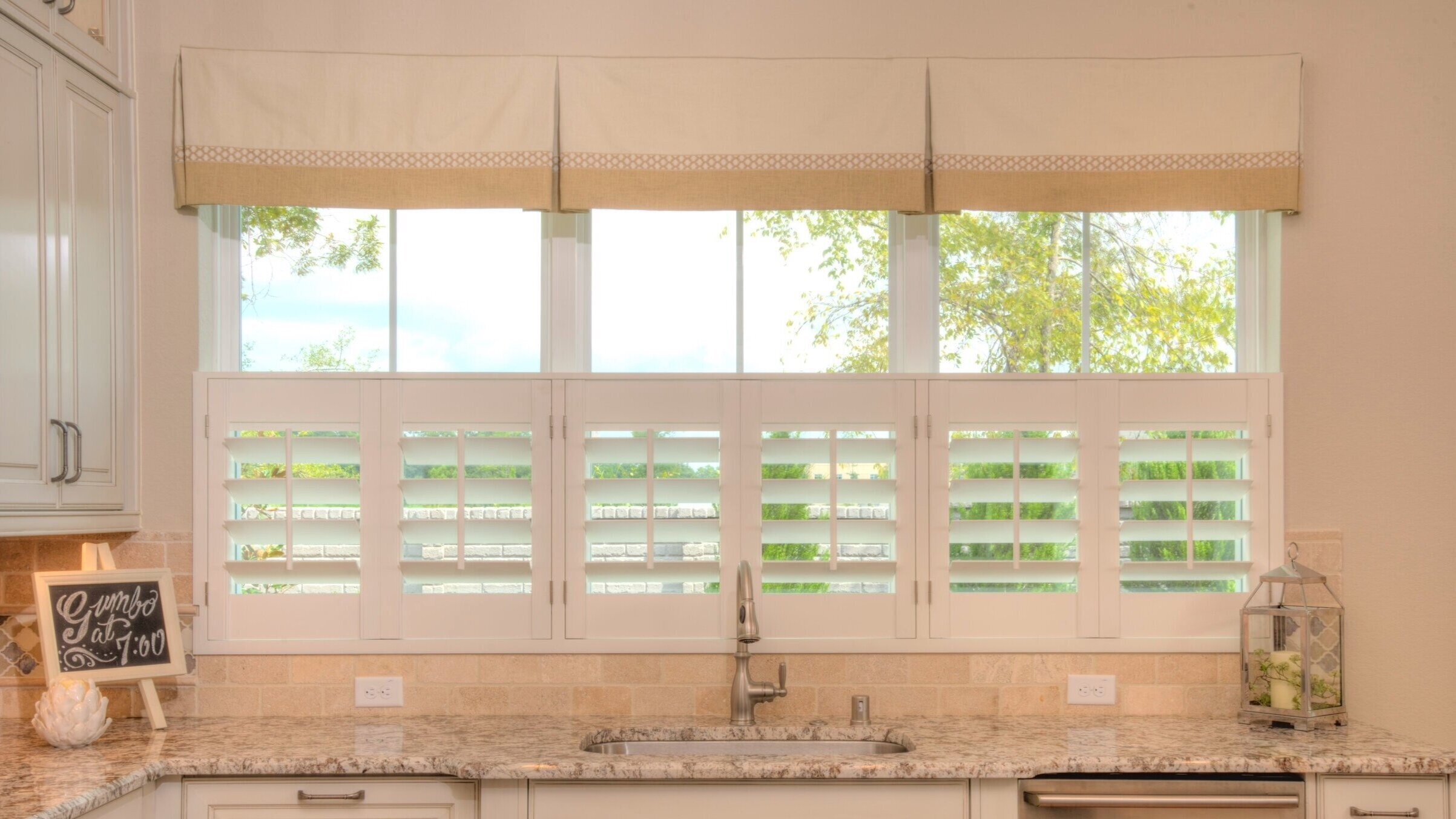Update with Shutters Phoenix: Long Lasting and Elegant Styles
Update with Shutters Phoenix: Long Lasting and Elegant Styles
Blog Article
What to Think about When Selecting In Between Blinds and Shutters for Your Windows: A Thorough Evaluation of Each Option's Benefits
Choosing the right window treatment is a decision that transcends plain aesthetic appeals; it includes performance, upkeep, and long-lasting investment. Blinds provide a economical and versatile service, while shutters provide unrivaled toughness and design. Each alternative boasts special advantages that warrant mindful factor to consider, specifically regarding just how they straighten with your home's layout and your individual preferences for personal privacy and light control. As we explore the crucial differences and advantages of both selections, recognizing these aspects will be important in directing you toward a decision that fulfills your demands and improves your space.
Trick Differences In Between Blinds and Shutters
Frequently, house owners find themselves mulling over between shutters and blinds when choosing home window treatments. Recognizing the key distinctions between these 2 options can dramatically influence their decision-making process.
Blinds are normally made from materials such as timber, synthetic timber, aluminum, or plastic. Blinds are commonly much more cost-efficient, appealing to budget-conscious property owners.
In contrast, shutters are strong window coverings that can be custom-fitted to the home window frame. They are frequently constructed from sturdy materials like timber or composite, offering a much more robust and irreversible solution. Shutters give far better insulation and can enhance the total energy effectiveness of a home. In addition, they typically require even more maintenance and investment compared to blinds as a result of their building and setup intricacy.

Benefits of Blinds
Blinds use a sensible and functional solution for house owners looking for reliable home window therapies. Among the main benefits of blinds is their versatility to different styles and preferences. Offered in countless products such as timber, fake timber, light weight aluminum, and textile, they can match any type of interior style scheme. Additionally, their wide variety of colors and textures enables modification to match existing decoration.
Another substantial benefit of blinds is their ease of procedure. Lots of contemporary blinds come with straightforward systems, including cordless alternatives and mechanized systems, making them obtainable for all ages. This ease is improved by their ability to give accurate light control, permitting house owners to easily readjust the level of sunshine going into a room.
Blinds additionally provide excellent personal privacy options, as they can be totally opened, partly tilted, or totally closed, depending upon the desired degree of seclusion. In addition, they are normally much more cost-efficient than shutters, supplying an economical service without giving up style or performance. Upkeep is straightforward, as many blinds can be cleaned up with a basic wipe-down, making certain that they remain an attractive function in any type of home for years to come.
Benefits of Shutters
Shutters offer a distinctive collection of advantages that make them an attractive option for house owners looking for stylish and resilient window treatments. One of the main benefits of shutters is their exceptional sturdiness - blinds phoenix. Constructed from durable products such as timber, plastic, or composite, they are designed to hold up against the examination of time and withstand damages from UV rays, wetness, and temperature level variations

Shutters also offer improved privacy and light control. Property owners can quickly change the slats to achieve the desired degree of illumination while maintaining personal privacy from the exterior. Unlike blinds, which may flex or droop gradually, shutters preserve their form and functionality.
In addition, shutters can increase the worth of a property (window treatments phoenix). Their classic visual and toughness allure to possible purchasers, making them a worthwhile investment. In recap, the resilience, power efficiency, personal privacy control, and possibility for increased property worth make shutters a compelling option for window treatments
Visual Considerations
When selecting window therapies, visual factors to consider play an essential role in boosting the overall style and ambiance of an area. Both blinds and shutters offer unique aesthetic features that can match numerous interior styles, from modern-day to conventional.
Blinds usually supply a sleek, minimal look, quickly readily available in a variety of products and shades. This convenience allows house owners to coordinate blinds with existing style, producing a unified look. Their horizontal or vertical slats can add a modern edge, click to investigate making them suitable for city settings.
On the other hand, shutters exude a timeless sophistication that boosts rustic and conventional insides. Their strong structure and personalized surfaces, such as timber spots or painted choices, stimulate a feeling of eternity. Shutters can function as a statement item, accentuating the window while supplying an upscale visual.
Inevitably, the choice between shutters and blinds ought to show not just individual style yet additionally the preferred atmosphere of the area. By carefully considering just how each choice lines up with the total style vision, house owners can efficiently enhance their room's aesthetic charm, ensuring a harmonious and inviting setting.
Cost and Upkeep Elements
Cost and maintenance are vital facets to consider when selecting between blinds and shutters for window treatments. Blinds are normally extra affordable, with a vast variety of options readily available at different cost points.
In contrast, shutters have a tendency to lug a greater preliminary expense as a result of their custom-made manufacturing and robust building and construction. Nonetheless, this financial investment may yield long-term cost savings, as shutters are often extra resilient and need much less constant substitute. They likewise read this article use remarkable insulation, possibly decreasing power expenses gradually.
Blinds normally need regular cleaning and occasional washing, while shutters can be cleaned down with a moist cloth for cleansing, making them much easier to maintain. Inevitably, the option between shutters and blinds should balance both preliminary investment and recurring upkeep needs to make certain a satisfying return on investment.
Conclusion

Blinds offer a economical and adaptable solution, while shutters offer unrivaled sturdiness and design.Price and upkeep are critical aspects to consider when selecting between blinds and shutters for window treatments. Blinds typically require regular dusting and occasional washing, while shutters can be wiped down with a damp fabric for cleaning, making them simpler to maintain. Ultimately, the choice straight from the source in between shutters and blinds need to stabilize both first financial investment and recurring upkeep requires to make sure a sufficient return on investment.
In summary, the choice in between blinds and shutters hinges on numerous variables, consisting of material composition, layout versatility, and expense.
Report this page